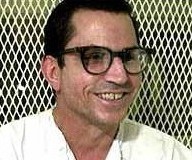|
STEVENS, J.,
Concurring in Part, Dissenting in Part
SUPREME COURT OF THE UNITED STATES
492 U.S. 302
Penry v. Lynaugh
CERTIORARI TO THE UNITED STATES COURT
OF APPEALS FOR THE FIFTH CIRCUIT
No. 87-6177
Argued: January 11, 1989 --- Decided:
June 26, 1989
JUSTICE STEVENS, with
whom JUSTICE BLACKMUN joins, concurring in part and dissenting in part.
As I stated in my separate opinion
in Teague v. Lane, 489 U.S. 288, 318-319, and n. 2 (1989), it is
neither logical nor prudent to consider a rule's retroactive application
before the rule itself is articulated. Nor am I at all sure that courts
should decide the retroactivity issue if it was not raised below. Cf.
Zant v. Moore, 489 U.S. 836, 837 (1989) (BLACKMUN, J., dissenting).
Finally, I do not support the Court's assertion, without benefit of
argument or briefing on the issue, that Teague's retroactivity
principles pertain to capital cases. Cf. Teague, 489 U.S. at 321,
and n. 3 (STEVENS, J., concurring in part and concurring in judgment).
But assuming, arguendo, that those principles do apply, it is
clear that the Court's discussion of the mitigating evidence question,
with which I agree, does not establish a "new rule"
[p350] as that term is used for retroactivity purposes. I thus
join Parts I, II-B, and III.
In Part IV-A, the Court decides that
a rule that the Eighth Amendment prohibits the execution of a mentally
retarded person ought to apply retroactively. Assuming retroactivity is
pertinent, I agree that the first exception to Justice Harlan's
nonretroactivity doctrine
should be understood to cover
not only rules forbidding criminal punishment of certain primary
conduct but also rules prohibiting a certain category of punishment
for a class of defendants because of their status or offense,
ante at 330, and that this
claim lies within that exception.
[*]
The remaining sections of Part IV
adequately and fairly state the competing arguments respecting capital
punishment of mentally retarded persons. In my judgment, however, that
explication -- particularly the summary of the arguments advanced in the
Brief for American Association on Mental Retardation et al. as
Amici Curiae, ante at 336-337 -- compels the conclusion that such
executions are unconstitutional. I would therefore reverse the judgment
of the Court of Appeals in its entirety.
|

